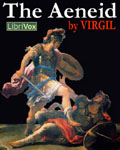The SFFaudio Podcast #827 – The Green Queen by Margaret St. Clair, read by Mike Vendetti. This is a complete and unabridged audiobook (4 hours 3 minutes), followed by a discussion of it. Participants in the discussion include Jesse, Will Emmons, and Jonathan Weichsel
Talked about on today’s show:
into mask art, other, cage guy, Ace Book D176, a shorter version in 1955, Mistress Of Viridis, the opening of the novel, The Scarlet Letter, a crown or something, very good and very bad, interesting ideas, a little too pulpy, structural problems, she churned this one out, she’s brilliant, we listen to a lot of science fiction on this podcast, The Journey Of Joenes, another masterpiece, The Last Spaceship, pretty pulpy, the ideas in it, the bugs, psychology trumps material reality, relationship stuff, good with the ideas, all the telling, central to the plot, an illusion?, the political stuff, uppers and lowers, the uppers live underground beneath the lowers?, a veil over the book, Ulysses by James Joyce, dating a woman, some sort of revolution going on too, a really good goodreads, concrete assertions, listened, spellings, Shalom, too much going on in this book, the plot is told backwards, explanation, the beginning at the end, Jerry on Goodreads
Despite not taking place on Earth or anywhere near Earth, this 1955 story (the serialized version was in Universe Science Fiction, March, 1955, as “Mistress of Viridis”) is clearly tied to Earth. The computers that people use on planet Viridis are “ibims”.
The computers don’t appear to have advanced much as mankind spread to the stars.
Except for the soft whirr and click of the ibim as it sorted the dossier cards, there was no noise.
The ibim, though not a new model, was fast. It had been sorting for some twenty minutes, and it had got through nearly half of the 400,500 cards that represented the feminine population of Viridis. But the basket marked “Hold” was still quite empty.
They end up having to relax their requirements in order to find possible candidates. What they’re looking for is a goddess—or, specifically, someone who can fake being a goddess. They get tripped up by residency requirements, of all things.
One of the interesting things about this world is how much it relies on what it calls “masks”. There are two kinds of masks: Verbal Masks and Veridical Masks. These masks are created by the ruling class to control the Lowers and keep them from rebelling… too much.
Masks appear to be what we would call memes. Verbal Masks are memes that are injected into the population, short stories that take hold of the population’s imagination. Veridical Masks are masks that use more than one sense; while the main character does make an off-hand reference to odors at least once, within this book they’re always or almost always sound and sight.
That is, this world’s population is controlled by a primitive form of Twitter and an advanced form of YouTube.
The main character recently introduced a Verbal Mask about a Green Queen, an embodiment of Nature, who will come to save the Lowers and dispel the radiation that makes Viridis so dangerous. The ruling class is shielded from this radiation; they live above some sort of shield; Lowers live below that shield.
The Green Queen myth turned out to be even more powerful than they’d expected. So they’re attempting to both use it and defuse it, and that means finding someone to take on the role.
The theme running through the story is that the myth appears at some points to be real, something transcending the constructed myth; and at others to be purely a construction of the various factions on Viridis, including one that is completely unexpected. Even at the very end of the story, just after we’ve been reasonably convinced that there was no truth to the myth as presented by the Verbal Mask, it appears to be coming true in a way that could not have been predicted by the real truth we’ve just been presented with.
Hollerith machines, all the Jews who have the tattoos on their arms, looking for the new green queen, salam, Chinese, very good insightful review, peripheral stuff, distracting and interesting, modeled on a whole bunch of things, twitter and youtube, like the way twitter works, we can’t have conversations with some people because they took in the mask, Rittenhouse, stories were told about, the trial, some people were disabused, other people didn’t get those memes or truths injected into them, hashtags are that, what’s the truth about Kyle Rittenhouse, he shot people, other people who were trying to take his gun away, the official line was before facts came out, video, testimony, obsessed with these things, verbal and veridical masks, riot/uprising, what are you getting at, Jesse, racist, illegal things, black people, it was okay that he shot white people then?, clearly white, black lives matter, petty proprietor, helping petty proprietor, better or worse, judgement, the media was portraying, a supercut after the podcast, cui bono?, who’s the upper?, petty vs. petite, baggage, we know that Will is a communist, not a secret, a pejorative, an example, bro, shitlibs, what makes a shitlib vs. a normal lib, doesn’t care and only wants, almost like an NPC, Jesse language, roof Koreans, the Rodney King riots, white people and black people, Korean American convenience store owner, standing in the rooves, defending from burning and looting, every word that we use, Cirsova uses it, the people who used his volunteer services, friends and family come help, small property owners, they’re not Blackrock, they don’t own 2/3rds of Ukraine, every piece of language we use is full, Bonnor, our main character, alcoholic, book length, her short stories are much tighter, her first novel, novels are difficult, your first longer book, a short story plot stretched out into a novel, this should have been 2 hours at most, really good ideas in it, early Philip K. Dick novels, terrible novelist, women’s sexuality, men looking at woman, a male gaze book, the termite queen, you’ve never had a baby come out of your body, the pinnacle of womanhood, fill me up, robot shower, we don’t get enough world building, too much worldbuilding, maybe Bonnar shouldn’t be the main character, he doesn’t really have a lot of agency, a mask maker fooled by his own mask, Madison Ave. executive, you have a job, body servants are servants who have jobs, the lowers have no jobs, Leaf Amadeus, on the nose, underdeveloped, Caroline Uglinger, a seamstress who embroidered her own shroud, Horvindial, Mirakis, eons after her death, Kandia, grey suit, blue hat, the guys who operate the ibims, if Philip K. Dick had handled this, The Man Who Japed, a great book, dealing with some really interesting things, veridical vs. verbal masks, Viridis is the planet, she doesn’t make it clear enough early enough, playing with names all day, latin for green, renewal, springtime, verify, Truth, what’s the secret of the planet, all the radiation isn’t there, “Russian interference” “hacked our election”, “crossed state lines”, bringing firearms across state lines, talking points, when J.D. Vance was chosen as the VP, “weird”, some of them work great, when she’s writing about this stuff in the 50s, “remember the Maine”, rhymey or memey, that whole war was ginned up largely by Hurst, invade Spain, so many things going on in this 4 hour book, radiation is an invisible killer, calibrate it, wartime propaganda, Plato in The Republic, the story about the Golden Age, technology enhances, Make America Great Again is a verbal mask, slogans, rallying cries, language unites people, left out, Hispanic community, Korean community, left out, less extreme example of that, he’s one of me, part of my crew, Trump forehead tattoo, Taco Bell, am I supposed to look at the tattoos or not, African or Maori?, tattoos are hard to understand, had sex with a couch, yolo, go out into the ether, her world vs our world, not top down, official control over social media, demonetized, booted off the platform, suppress or boost, BLM, became top down, special dance with kente cloth, “land back”, specifically made it so it is not racist, the babies, Chinese, looking at people’s bodies, your race doesn’t make you an upper, a class or caste system, the lowers are totally parasites, little glimpses, an upper class woman walking beside a lower class man wearing a kilt/miniskirt, bony knees, his spine, resentful, trying not to take in the bad food, Hinduism, Judaism, Kosher food, radioactive, by eating too much of this radioactive food you’re shortening your life, religious philosophies, Christian Scientists, diet books, preferred diet, is she wrong, Mark Twain hated her, #TeamTwain, food that falls outside of the diet is bad, deeply flawed, pinning down the flaw, first novel problems is our theory?, Jonathan’s first novels are unpublished, John Updike’s first novel is a werewolf story, never publish this book, a university lockbox, so embarrassed, we will eventually get a hold of it, unless the university burns down, there’s value in here, almost a pulp novel, mass market paperback to read on the train, disposable literature, plotting or structuring, achievements in writing novels, filling in details is not the way it should be happening, hit a certain wordcount is the kiss of death unless you’re a magician, a parody of science fiction, long speeches, if you put them in Captain Kirk’s mouth, a little A.E. van Vogty, Black Destroyer, The Voyage Of The Space Beagle, Destination Universe, characters are inhuman, he brings ideas to things, the Weapons Shops stories, future village, snake cult temple, Conan the Barbarian movie, a weapons shop opens up in your town, it reads like the Russians have gone through a loophole and anyone can by an AK, they screen people, superinteresting, not public domain, not well written, disturbance of an idea, every story has ideas in it, cute, bizarre, the spirit of a star, Green Queen meme comes alive, a very Philip K. Dick move, not being able to know what’s reality and what’s not, we can’t sympathize with him, too alien, the cult of the apple pickers, almost Roman, one of the influences, the city of Rome, Christianity, cults around professions, guilds?, trade guilds, longer and fixed, or shorter, if you found this novel in a drawer, you could take the ideas that are in here and make a good novel out of the ideas that are in here, what went wrong, time to money ratio, originally published for a magazine, the original art, a rocketship, the green queen and a guy outside a rocket, she’s zapping him, the art for the original magazine publication, a woman covered in a green starfish, thematic, a woman above a man, out of a spacesuit, the radiation, is it saying that veridical masks masks us to truths about concrete reality around us?, the barrier between castes, what a huge topic to tackle, a character who randomly became psychic all of a sudden, I just sense things, throws everything off, can’t be tricked by the masks, undercut at the end, the history of the planet, she was just a bug!, you’re sitting in the chair and getting Trump tattooed on your forehead, in group, I hate you mom/dad, bought into the ideological belief, seven months ago, back in January, when Trump gets assassinated how weird it will be, going to be very meta, the first week after the assassination attempt, a little bit apologetic, he has to be stopped, he’s Hitler, completely memory wiped, that never happened, endless upper investigation, the bodycam footage, Jesse is just crazy, local news, moments right before and after, I told the Secret Service to guard this building, this is shit!, we’ve got to get the shooter guy, a good video, when Jonathan recounts it, silos of responsibility and dialogue, organizational silos, massive incompetence being promoted to the top everywhere, completely demented, never does her homework, the significance of the passage of time, people who don’t do their homework, failing up, not as senile as you keep on saying, the speech where everybody though he was senile, he’s “older”, legitimately the president, a bizarre theory, having Jonathan on this podcast, Jesse doesn’t see his own veridical masks, not a big mask guy, a constructed reality online, voting patterns, quell dissatisfaction, to make people more accepting of their fate, the uppers resent the lowers, there would be riots and uprisings, pity the lowers, eat polluted food all the time, how Americans view the poors, welfare queens, baskets of deplorable, food deserts, two teams vs. one team, takes on it are slightly different, in what sense are they different, it’d be better if they were both gone, one secret party running the country, institutionally, vote against genocide, which team should I vote for, Jill Stein, foreign policy, domestic policy, infrastructure, bringing jobs back, the thing that they want to do is impossible, can’t stop corporations, capital flight tax, they can’t do that because they are funded, put up tariffs, the most popular electric car in Europe is Chinese, Tesla, more popular than the Chevy Volt, even on Vancouver Island, 3-4 white Teslas, 100% tariff on Chinese electric vehicles, a subsidy, BC subsidized US electric and Japanese electric cars, Walmart’s the only business in town, Chinese are bad and Russians are bad, Nabisco moved to Mexico, food you shouldn’t eat, really mad, how can the politicians stop them, tax on the cookies, a free trade agreement, lower the minimum wage, or import people, foreign workers, that wouldn’t solve the problem of the disappearing jobs, you’re dictator, dictator of New Jersey, the national guard would be unable to defeat the United States, eliding the question, dictator of North America, shut down Nabisco, you don’t like Oreos, cookies should be made by a grandma, maximize profits and minimize costs, Richard D. Wolff, Mondragon cooperatives, start with a bank, if you become unemployed, a lump sum to start your own cooperative, on the dole for 3 years anyway, solve all sorts of problems, the GI bill, infrastructure and jobs, all the veterans, Evan’s solution: universal army, the silly way to do it, grandma doesn’t need to go to drill practice, universal conscription, makes sense for the United States, Kamala’s VP is not a communist, it’s nuts, that’s not reality, driving a MAGA car, looking for a fight, ginned into thinking this is a real thing, the spin for Kamala, so good, least popular VP, memory holed, all these memes, all these ads, white women for Kamala, white dudes for Kamala, The Big Lebowski (1998), Jeff Bridges, beat that fascist, he’s a fascist again, it is hard to know this is a good book, Chip Delaney [Samuel R. Delany], a Farmer guy, advanced readers, coming into literature, throw them off misimpression, same logic as ban this book, anything past 10 years ago you don’t need to read, I know better than you, break into the literature, their mentor, fell off of a coconut tree, fell out of a time machine, not the best introduction to science fiction, in that explicit situation, a great book, hard to know, Jesse does his homework, some books are better introductions to science fiction, Jonathan might be right about this, simple advice, just do what I say, just vote this way, just do that thing, a reality that effects me, the starving children in Gaza, verbal masky, she gives big speeches about it, the Ukraine war, six facts, a smaller country invaded by a larger country, let’s here him out, in the context of an essay, Jeannette Ng, Campbell is a fascist, more money in that, the whole Cat Rambo situation, unforced errors, she stumbled over her own non-dick, Dick or non-dick, as a female book, Ursula K. Le Guin would have some person from Earth come to this planet, can’t be too smart, has to be a good actress, she’s credulous, credulous too great a readiness to believe things, outside the bagel shop, everybody’s credulous because advertising works, hard to have conversations about a popular veridical mask, credulousness, the ibims that they’re using, a D&D character with high charisma and low intelligence, she doesn’t even know she’s not the green queen, a lady talking about ladies being dumb, in Ringworld, he picks this chick, [Teela Brown], a 7th son of a 7th son sort of thing, earth has the technology to physically control people’s thoughts, psychology and advertising, ads, hidden from the masses, put on the population to control the reality that they see, a big problem wit the book, we’re following the badguys, foment a revolution, a more interesting story if St. Clair had decided to follow the revolutionaries, a tiktoker, fucking Eddie Liger?, ACP, be better at tiktok, Scott Miller took a course on how to be a good youtuber, professional youtubers, you can see these patterns, interaction reminders, smartTubeBeta, big long things you can skip, the removal of the dislike [count], removal of the ability to view likes, see what somebody I hate is liking, they’re just hiding it from us, so they can control us better, a way to manipulate people, a personality test, psychology, Timothy Leary, mind mirror, giant personality test, change your personality, scenarios, a tortise overturned, what do you do?, someone gives you a cat skin wallet, graphs your responses, pick a fictional character, Spider-Man, Julius Caesar, most famous dictator ever, the goal is to change the way that you’re thinking, shots of heroin, what the likes are all about, heart, angry, care, pushing the button, creating a map of your psychology, Mark Zuckerberg gets to get it, very credulous, believe the things that they’re hearing, did you quit twitter, keep my friends on twitter, start a guerrilla war against twitter, brink back the dislikes, one of the reasons we care about dislike, good content or not, a really bad ratio, I don’t need to click on that, de-rank it, how to fix your lawnmower, stripped down and simple, Reddit came a little late, gamed and wrecked, after blogs, BBSs, web 2.0 stuff, blogs were destroyed, Scott was abandoning it, a commonplace notepad, IMDB, writing review, bought by Amazon, Goodreads, you have to own your own content, an older movie on IMDB, old reviews, long and in depth, why is this guy writing all these movie reviews, bloggers without a blog, we’re lowers, what Jonathan does for a living, underemployed by technical definitions, jobs at poor pay, play computer games, most people are lowers, most uppers are lowers too, from the Hamptons, lush upscale life, suicide, borrowing money to pay for it, smaller scale, covered in pustules, a fungus, psychosomatic dying, Return From The Stars, Treasure Island is next, by making it Double Star, a space voyage across the ocean, Muppet Treasure Island, everybody is a captain, pirates, smart guy, fun guy, where the YA novels came from, really bad novel, William Golding’s Lord Of The Flies, I hate this book, a really popular 19th century novel, the wikipedia entry, his cave man novel, the neanderthals are kind gentle people, similar themes, The Coral Island, 1857, R.M. Ballantyne, Robinsande, never out of print, civilizing effect of Christianity, named the same, forced to read, its evil propaganda, predict a lot of what happened out of the last decade on twitter, a bad joke, pile on that person, destroy their lives, he’s missing something, he’s got one note, an art novel, pretty description of things, more like The Blue Lagoon by Henry De Vere Stacpoole, despite, Thackery, a LibriVox version, influential, euro popular, 11 hours, a traveler at heart, shipping out to the South Seas, shipwrecked, wonders of the sea, an unexpected source (Jesus?), kinda being jokey, so full of Robinson Crusoe, the thesis he’s making, loves his strawmen, stacked deck, find deep meaning in this very small meaning book, I’d like to do more science fiction too, start a new podcast, books and art that makes people angry, good or evil, challenges you, what good literature does, what book makes you angry?, when Jonathan started doing this podcast, greater speeds, a good speed, getting bored, put the speed up higher, full of good ideas, not well structured or well developed so we can, The Last Spaceship. The Phoenix On The Sword, Will’s review, substantial enough, A Witch Shall Be Born, the cartoon of Conan The Adventure, a phoenix on his shield, the first one in Weird Tales, everything jumps out fully formed, here’s this whole world, king of Aquilonia, been all Stygian, he’s about being a man, man, a story on the podcast, new to Howard, a Solomon Kane story, two big anthologies, a complete narrative, ending as an old guy, read by Phil Chenevert, love you Phil Chenevert, nailed/crucified, novel length, The Hour Of The Dragon, he wanted to make more money, write a novel, after he killed himself, living on money that he didn’t have, a total neophyte, the comic book version, Roy Thomas, stripping out some of the text, John Buscema, Savage Sword Of Conan, astoundingly good, Vale Of Lost Women, not a popular story, because racist, he fights a god and doesn’t lose, a valley full of women that are flowers, fights a god from space, very raw, Jack Williamson, if public domain, the clearance, on audible, The Humanoids and With Folded Hands, Stefan Rudnicki, a good science fiction novel, Joe Biden is president of the world, but not really in charge, dottering old man who suddenly grows six inches, taking care of humans and keeping them safe, the robots come, hurray hurray, I want a cigarette, I must lobotomize you now, how am I going to defeat the robots, The Green Girl, stories about green women, Ray Cummings, collaborative work, The Masked World, Will’s blog thing, anything he really needs to tell, Legion Of Space, Legion Of Time, space opera-y, time opera, Blackstone Audio, before podcasts were invented, tonight’s episode 799, 9 years, run outta numbers but not books, science fiction stories, Algis Budrys, WHO? was enough, more Silverberg, any Heinlein, the one with twins, Podkayne Of Mars, Time For The Stars, set on Mars, really good, this actor, you gotta play the president, Alan Dean Foster, the Alien novelization, drug themes in science fiction, two shorts, a Silverberg and something else, The Happy Unfortunate and The Hunted Heroes, Larry Niven didn’t start until 1966, The Integral Trees, Sirius by Olaf Stapledon, one more, Odd John, Omega: The Last Days of the World by Camille Flammarion, all collaborative, Niven is never going to be public domain, so much Silverberg, and interview with him in the new Galaxy, skinsuit, what happened, die a natural death, walk him around the compound, Biden grew six inches, too many Jose Farmers, Damon Runyon, Mark Twain, Star Man’s Quest, The Mysterious Stranger, Samuel Delany, his criticism, everybody’s mad at, Joanna Russ, The Barbarian, her taking on Conan, I think I would hate this, The Female Man, only one book, How To Suppress Women’s Writing, you’re right I’m shit, Harlan Ellison, a juvenile delinquent in space, angry characters, his criticism, more Stanisław Lem, wait six months, Solaris, Memoirs Found In A Bathtub, Star Diaries, Further Reminiscences, The Futurological Congress, a few in this series, German TV series, the famous one, if standalone, a 1971 black humour science fiction novel, Ijon Tichy, the narrator, comedic stories, send this stuff to Will, shownotes, look at the schedule at the bottom, from six months ago, Woody Guthrie, It Takes Two To Conga, Memoirs Found In A Bathtub, a hermetically sealed underground community, it can’t be deleted now, show up for it, twin gifts, hapless planet Earth, caught up in a local revolution, flash frozen, a funny piece, thinkpiece, comedy, satire, Solaris isn’t a comedy, a straight up ponderous piece, a good memory for books, Arkady Strugatsky, Stalker (1979) is punishing to watch, similar to Harry Potter, recruited for this job, weird group of people, Philip K. Dick, he’s a good guy, sickmyduck.narod.ru, good fun, Monday Begins On A Saturday, an interesting story, two hitchhikers, Karelia, research into magic, Nathaniel Priestly, Adam Roberts, he’s fine, the complete Philip K. Dick, Martian Time-Slip, A Maze Of Death, Now Wait For Last Year, space Mussolini, what haven’t you done, Transmigration Of Timothy Archer, non-sf ones, 150 stories, long or short, contrast, medium length, Waterspider, carefully shaved his head, each man only one inch high, the worst part of the vision, in all probability it was true, Minority Report, very modern, with all the UK stuff, arresting you for what you said on Facebook, different, prevent people from doing crimes tomorrow, its status, it is available, not a great great story, a good think piece, Tom Cruise is running around the city, I didn’t do the crime, 3 autistic people in a bathtub, why they picked that one, unadaptable, an abortion truck, A Maze Of Death, he doesn’t plot novels, a little shack, just speed, psychosis from speed, full of drug ideas without drugs, marrying five women, as a person, ahead of his time, normal guy working a job in the 1980s, anything from the 60s, Retreat Syndrome, Return March, The King Of The Elves, goes psychotic, The Mold Of Yancy, The Trouble With Bubbles, The War With The Fnools, when the magazines die, What Will We Do With Ragland Park, Top Standby Job, Little Black Box, The Infinite, The Eye Of The Sybil, a black man who lives in our reality, it’s raining, on the edge of his business collapsing, convenience store gas station, our king is dying, the king dies, Philip K. Dick is amazing,
IT WAS RAINING and getting dark. Sheets of water blew along the row of pumps at the edge of the filling station; the tree across the highway bent against the wind.
Shadrach Jones stood just inside the doorway of the little building, leaning against an oil drum. The door was open and gusts of rain blew in onto the wood floor. It was late; the sun had set, and the air was turning cold. Shadrach reached into his coat and brought out a cigar. He bit the end off it and lit it carefully, turning away from the door. In the gloom, the cigar burst into life, warm and glowing. Shadrach took a deep draw. He buttoned his coat around him and stepped out onto the pavement.
“Darn,” he said. “What a night!” Rain buffeted him, wind blew at him. He looked up and down the highway, squinting. There were no cars in sight. He shook his head, locked up the gasoline pumps.
He went back into the building and pulled the door shut behind him. He opened the cash register and counted the money he’d taken in during the day. It was not much.
Not much, but enough for one old man. Enough to buy him tobacco and firewood and magazines, so that he could be comfortable as he waited for the occasional cars to come by. Not very many cars came along the highway any more. The highway had begun to fall into disrepair…
skip down, limp and sodden, “I’m the king of the elves, and I’m wet.”, forlornly, silently, gets really dark, a psychotic delusion, Beyond Fantasy, a literal story, Edgar Rice Burroughs books, The Gods Of Mars, the second one, The Eternal Savage, Twilight Zoneish, in caveman times, Beyond Thirty, cross to Europe, hands down, re-read A Princess Of Mars, changes the tone, very atheist, a certain Christian audience, dies in a cave, The God Of Tarzan, people putting on a show, sounds a lot like the book we just did, humorous, John Carter, JC, like/hate, when COVID was just starting, Foster, You’re Dead, his parents cant afford the latest bomb shelter, guess you’re going to die then, John Hopkins (University), account deleted many times, a shit poaster, Mimetic Value, time isn’t linear for God, Jesus suffers a bit more, to incarcerate, Terminator and Interstellar, everything science fiction is Christian, paleo jesus arrives from the future, The Lovers by Philip Jose Farmer, John Connor, in the second Terminator movie, come with me if you want to live [forever in heaven], a lot on Audible.com, your hero and mine, Mark Twain, To Your Scattered Bodies Go, Farmer wrestling, Sir Richard Francis Burton, read his short stories, truly public domain, time travel Jesus thing going on it, The Skull, Paul wasn’t having any of it, guy in the future is a criminal arrested by the cops, go back in time and kill this man, this church that’s been subverting the government, goes back in time, two weeks off, zap everybody, interferes with a teenage couple’s relationship, just like Behold The Man, Conger is a JC as well, stoning him, he’s Jesus, a combination of Terminator and Behold The Man, Joe Haldeman, done The Forever War, more Bester, haven’t done all the Simak, Mindbridge, superhorny, mud turned into the perfect woman, Forever Free, Forever Peace, Camouflage, a collection, a fixup, parts of it are public domain, you shouldn’t do a show on a fixup or collections, understanding none of them, Special Deliverance is very silly, 1982, allegory, ridiculous, selling Will, Project Pope, Simak is worth doing, Heritage Of Stars, All Flesh Is Grass, Time Is The Simplest Thing, A Choice Of Gods, it’s your call, bud, a Simak train, in the suburbs, post-apocalyptic, indians robots, alternate reality, poetry planet?, see what he’s looking at, Jesse’s secrets.


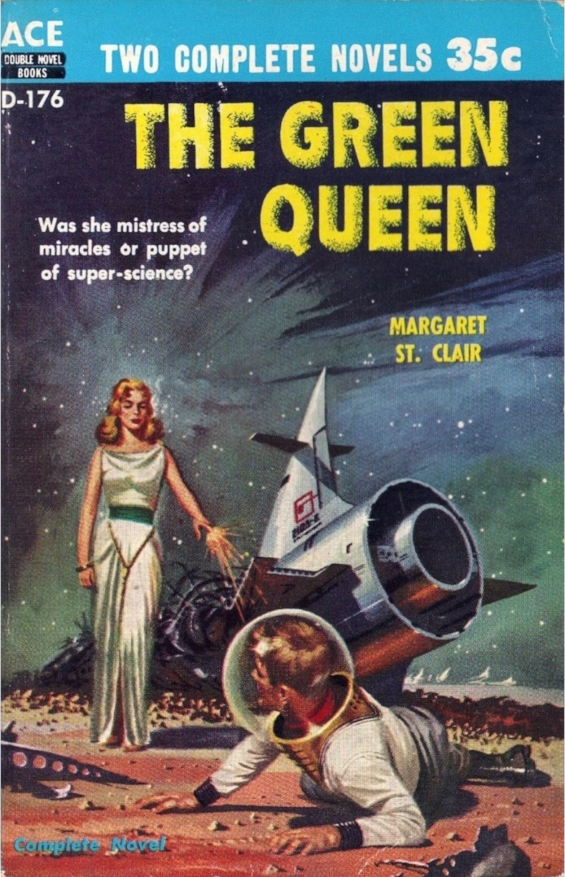
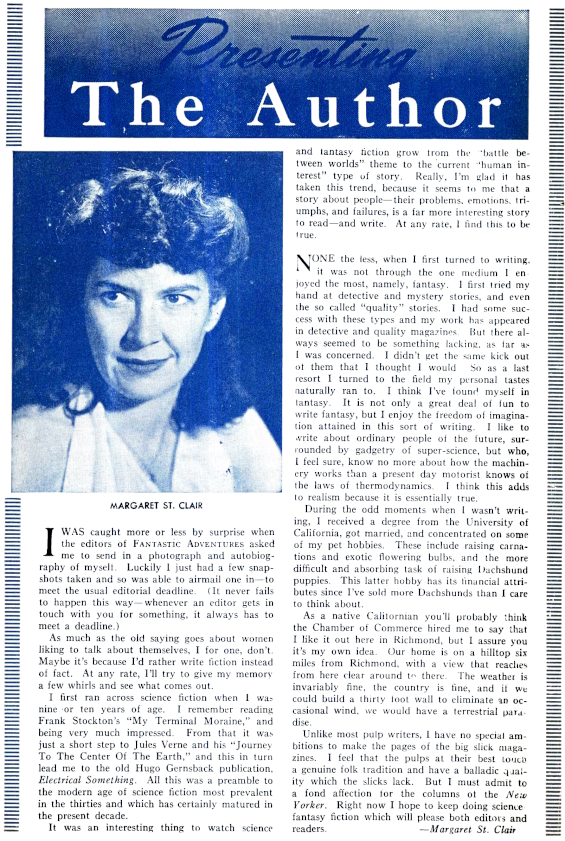
Posted by Jesse Willis
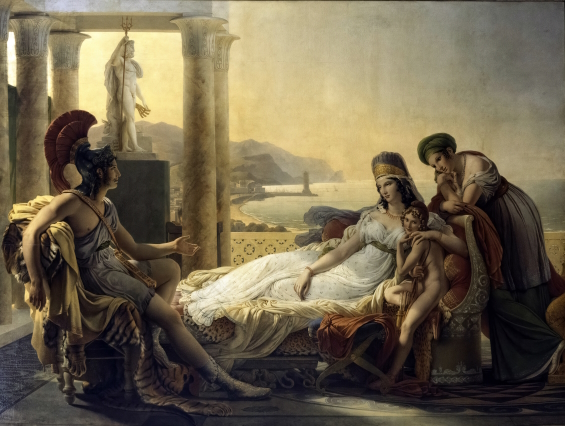

 Reading, Short And Deep #078
Reading, Short And Deep #078
 Siege Perilous (The Mongoliad Cycle #5)
Siege Perilous (The Mongoliad Cycle #5)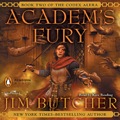 Academ’s Fury
Academ’s Fury
 Out now from LibriVox is an early English translation of an epic poem. Aeneas’s story is the story of the foundations of the Roman republic and the Roman empire. Its ethos plays an important role in shaping who we are nearly two millennia after it was written. I think of it as the first in a long tradition of NOIR LITERATURE. Sure, you thought that the story of Romulus and Remus was grim. But that’s much later in the history of the Roman people – at least according to the greatest Roman poet, Publius Vergilius Maro, better known as Virgil. Virgil wrote this earlier history of the Roman origins for his Emperor, Gaius Julius Caesar Octavianus, better known as Augustus.
Out now from LibriVox is an early English translation of an epic poem. Aeneas’s story is the story of the foundations of the Roman republic and the Roman empire. Its ethos plays an important role in shaping who we are nearly two millennia after it was written. I think of it as the first in a long tradition of NOIR LITERATURE. Sure, you thought that the story of Romulus and Remus was grim. But that’s much later in the history of the Roman people – at least according to the greatest Roman poet, Publius Vergilius Maro, better known as Virgil. Virgil wrote this earlier history of the Roman origins for his Emperor, Gaius Julius Caesar Octavianus, better known as Augustus. 